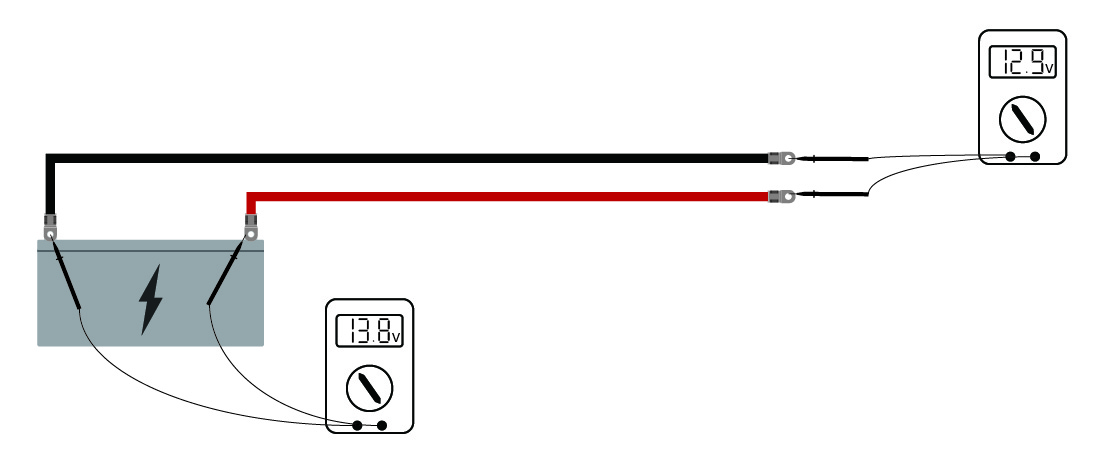
Everyone knows the power cable should be as short as possible in vehicle power system. But without specific parameters, it is still hard to determine the length of the cable that needs.
The longer cable brings larger voltage
drop. If the cable gauge is not qualified it will bring you much troubles,
overheat, low voltage and even the fire hazard. It will be easily found that 13.8Vdc
at your battery side and 12.5Vdc at your inverter side. To avoid voltage drop,
learning how to select the correct cable is so much important!

This formula needs to be followed when you are making any electrical DIY in your vehicle:
Vd= Length x Current x 0.017 / Area
This formula is used in the laboratory conditions,
the temperature @ 25℃. With the higher temperature the voltage drop will increase
at approx. 0.4% / ℃
• 0.017- This scientific modulus only
applies to copper.
• Area is in square millimeters of copper cable. Check the cable parameters with the dealer. Some manufacturers stating wire diameter(mm) rather than area(mm2), some even including the insulation. Check the cable carefully before you buy it.
Example
A 4WD has 3 meters of 35 square mm power cable between battery and inverter, how much voltage drop at 75A?
3 x 75 x 0.017= 3.83. Divide this by 35mm2 (cross section area of wire): 3.83/35= 0.1V.
It looks not bad when we take this cable into our DC supply system. What if we use the wrong cable of only 15 square mm?
A 4WD has 3 meters of 15 square mm power cable between battery and inverter, how much voltage drop at 75A?
3 x 75 x 0.017= 3.83. Divide this by 15mm2 (cross section area of wire): 3.83/15= 0.26V
It become wrose if we use the small gauge cable to work as the power delivery of the low DC energy.
In a Class C motorhome, in the AC distribution system this voltage drop will even cause a bigger difference:
A motorhome has 18 meters of 6 square mm wire for power distribution, how much voltage drop at 50A?
18 x 50 x 0.017= 15.3. Divide this by 6mm2 (cross section area of wire): 15.3/6= 2.55V !!
In this situation if there was 12.5Vdc at the battery side, and there would only be 9.95Vdc at the back side. No doubt that the inverter cannot work and most LED lights would become very dim.
And When the cable was installed in the cabinet and its temperature is 40ºC, there would be a 2.55V+(40-25)×0.4% =2.61 drop. Never forget the high temperature will also cause the high resistance of the cable, which means the voltage drop will become larger than the forumla says.
POPSAIL INTERNATIONAL INC.
+86 512 68638912
service@popsail.com
7 Days a week from 9:00 am to 21:00 pm